Physical Address
304 North Cardinal St.
Dorchester Center, MA 02124
Conjoined twins are amongst the most uncommon, complex, and uniquely challenging patients to be cared for by plastic and reconstructive surgeons. A multidisciplinary team approach is paramount in the care of conjoined twins, and plastic surgery involvement is critical given the absolute necessity of adequate soft-tissue coverage at the time of operative separation. The advent of tissue expansion and advances in anesthetic and intensive care management have greatly improved the ability to care for and successfully separate conjoined twins in recent decades. The objective of this chapter is to outline historical perspectives and theories in etiology of conjoined twins, review classification schemes of conjoined twins, discuss perinatal and postnatal management, and highlight plastic surgery principles in management of conjoined twins. The process of surgical planning and separation will be reviewed via a case study of craniopagus twins separated at the Children’s Hospital of Philadelphia.
The absence of an animal and/or experimental model in conjoined twinning precludes a definitive embryologic explanation of the phenomenon. All conjoined twins are monoamniotic and monovular, thus genetically and immunologically identical. Two main theories exist to explain the embryologic development and occurrence of conjoined twins: the fusion theory and the fission theory. The fission theory states that conjoined twinning is a result of incomplete separation of the two embryonic discs arising from twins in a monovular pregnancy. The fusion theory states that conjoined twinning results from fusion of two individual and separate embryonic disks from a monovular pregnancy, with the fusion specifically occurring at anatomic sites where ectoderm is typically absent. These sites include the primitive origins of the heart, diaphragm, oropharyngeal membrane, cloacal membrane, and neural tube. The site of fusion is always homologous. The fusion theory is favored as the more likely explanation for conjoined twinning.
Conjoined twinning occurs in approximately 1:50,000 pregnancies and 1:200,000–1:250,000 live births, and is three times more frequent in females than in males. The predominantly utilized classification scheme by Spencer describes conjoined twins by the predominant site of union ( Table 34.1 ). The site of union may be ventral (87% of cases) or dorsal (13% of cases); within ventral unions, the location may be further subclassified as rostral, caudal, or lateral. Ventral–rostral unions include cephalopagus, thoracopagus, and omphalopagus twins; ventral–caudal unions include ischiopagus twins; ventral–lateral unions include parapagus twins. Dorsal unions include craniopagus, rachipagus, and pyopagus twins. Furthermore, patients can be classified by the total number of structures present and shared, using the prefixes di- (two), tri- (three), or tetra-, and the suffixes -pus (lower extremity), or -brachius (upper extremity.) The type of conjoined twin and structures one can expect to be involved are outlined as follows. The reported prevalence of each type of conjoined twin varies dependent upon source ( Table 34.2 ).
Thoracopagus: Thoracopagus twins are positioned facing each other and are conjoined ventrally at the chest and abdomen ( Fig. 34.2 ). They variably share hearts (pericardium, 90%; heart, 85%), upper gastrointestinal organs, and livers. In thoracopagus twins, the degree of cardiac union is often the major limiting factor in determining separability. Accompanying cardiac anomalies may be present.
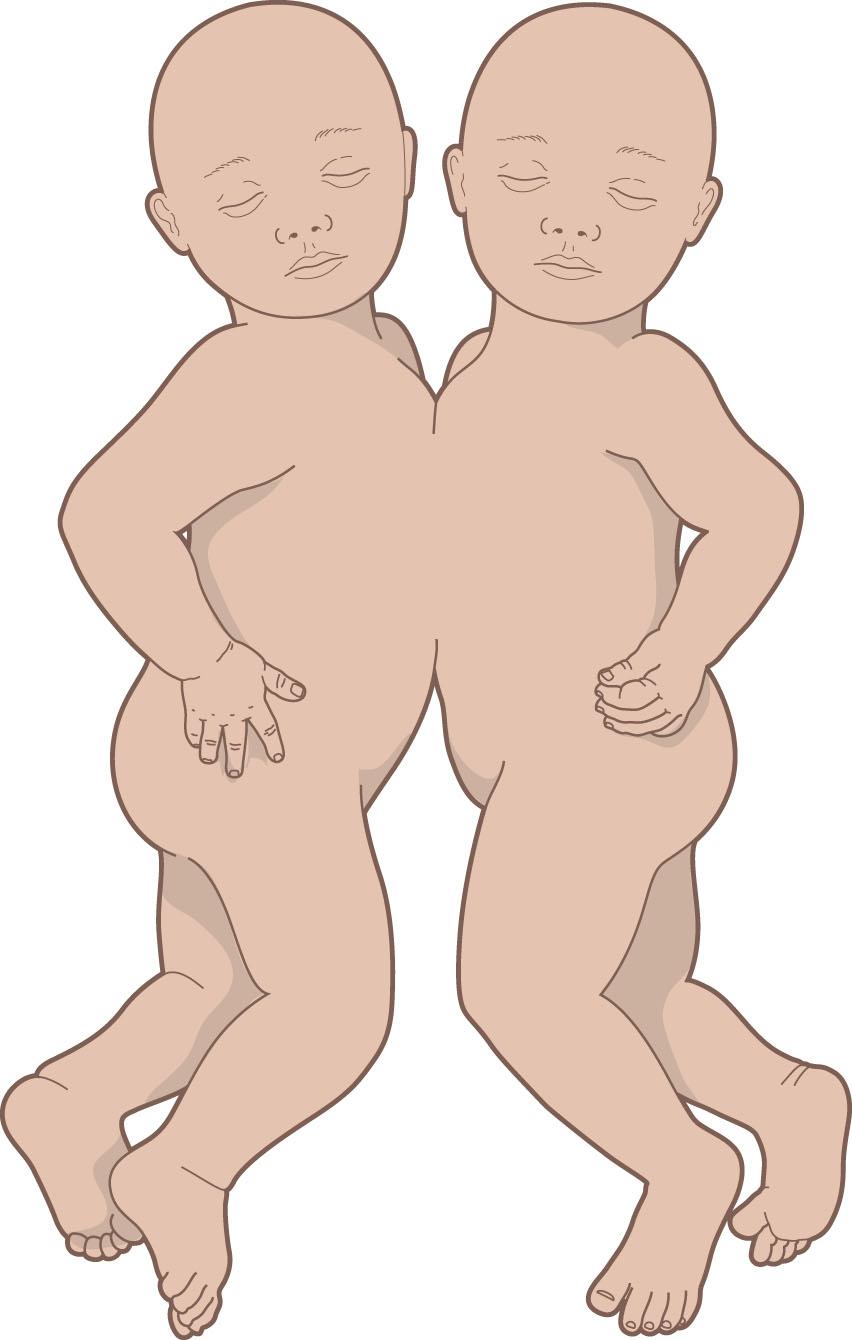
Omphalopagus: Omphalopagus twins are positioned facing each other and are conjoined ventrally at the abdomen with variably shared gastrointestinal structures, livers, and biliary trees ( Fig. 34.3 ).
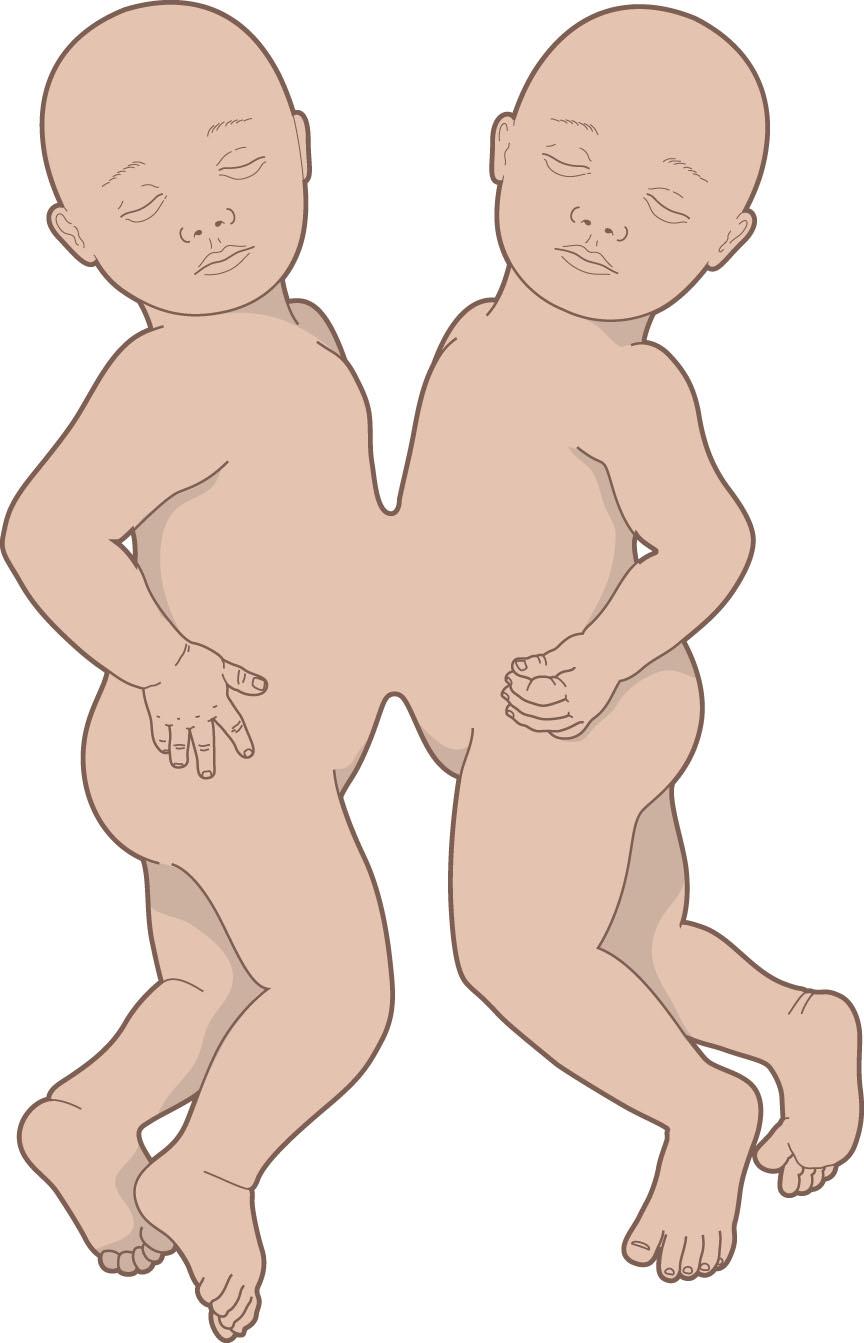
Cephalopagus: Cephalopagus twins are conjoined ventrally from top of head to umbilicus ( Fig. 34.4 ); these twins are considered nonviable and are typically terminated or naturally die in utero .
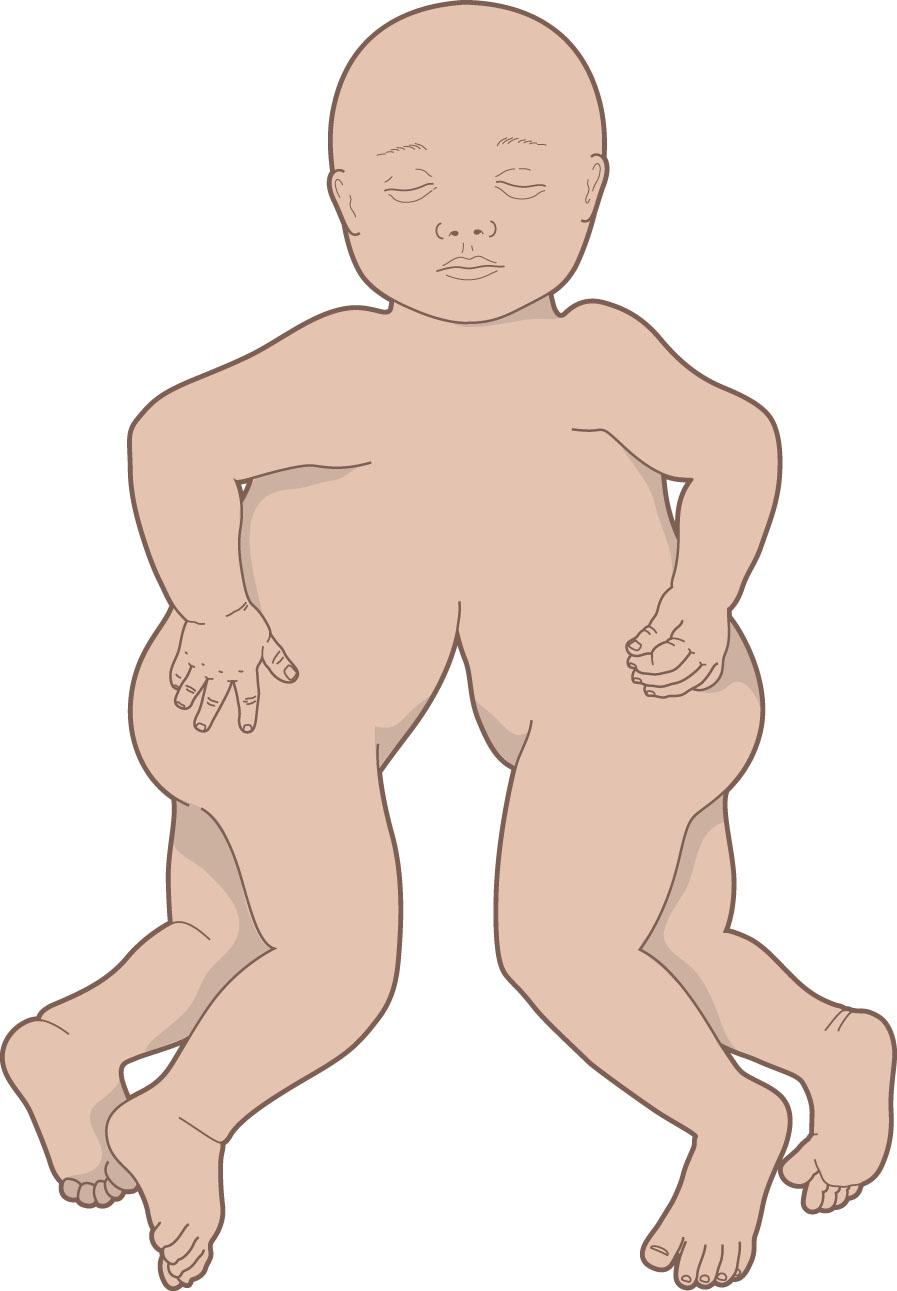
Ischiopagus: Ischiopagus twins are conjoined at the pelvis ventrally with variably shared anorectal and genitourinary structures. Ischiopagus–tetrapus twins are those sets in which each twin has two legs; ischiopagus–tripus twins are those sets in which each twin has one normal leg and a third, common leg is present ( Fig. 34.5 ).
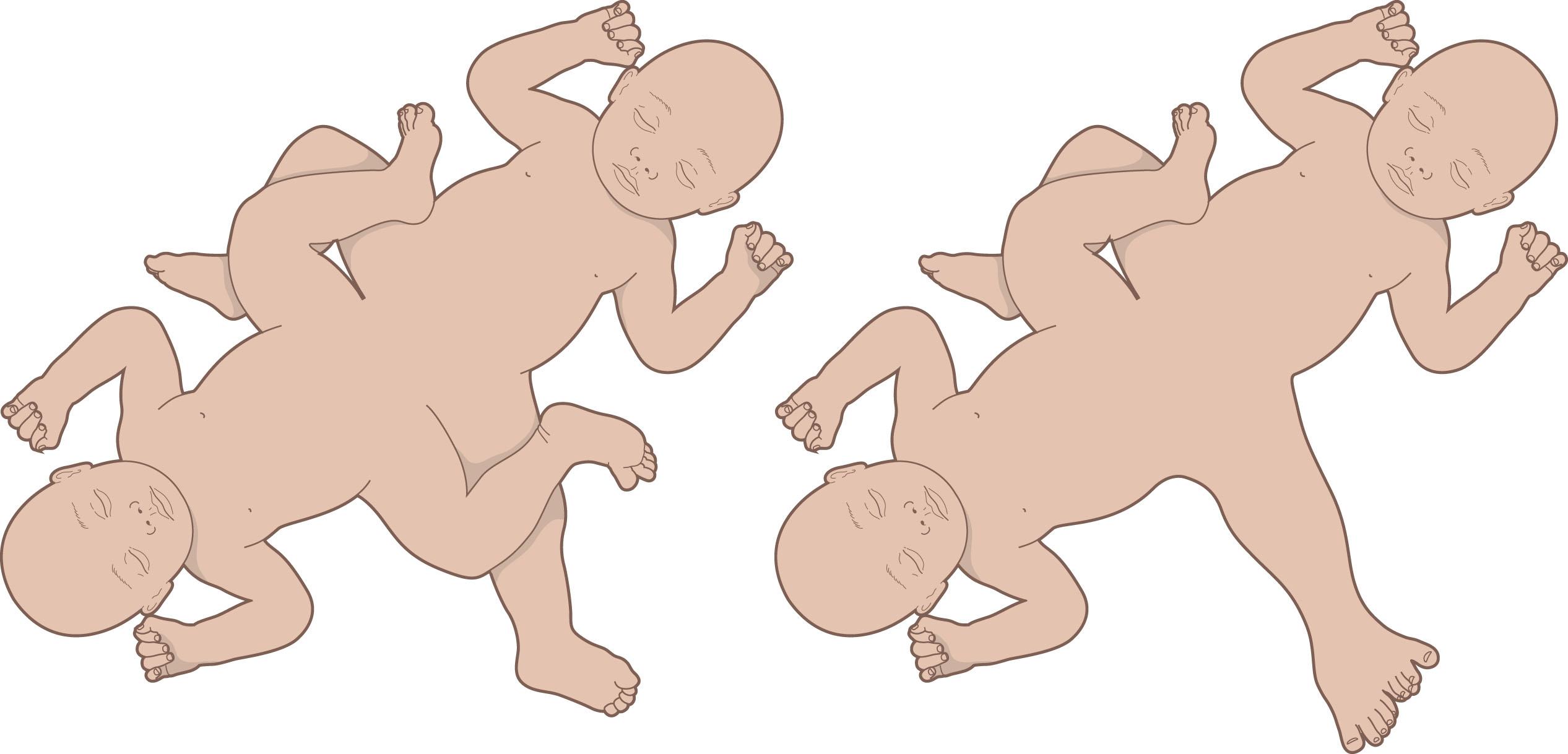
Parapagus: Parapagus twins are conjoined at the pelvis ventral–laterally with variable trunk fusion and were historically known as dicephalus twins ( Fig. 34.6 ).
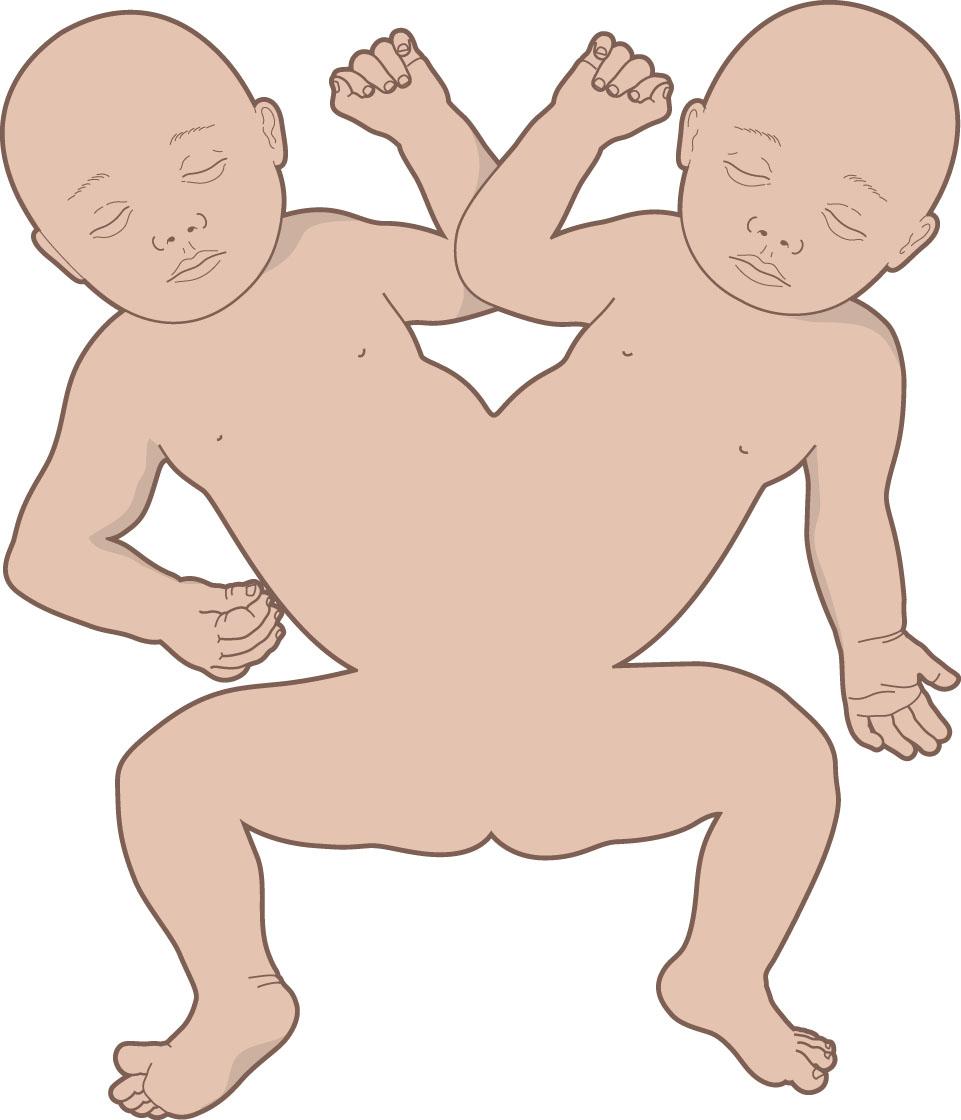
Craniopagus: Craniopagus twins are conjoined at the cranium with varying degrees of shared calvaria, venous sinuses, meninges, and brain ( Fig. 34.7 ). The face and foramen magnum are not involved in craniopagus conjoined twins. Craniopagus twins may be categorized depending on the calvarial location of fusion (frontal, parietal, occipital, temporal) ( Fig. 34.8A–D ), the structures involved in the fusion (scalp, dura, leptomeninges, cerebral cortex), the configuration of the fusion (vertical or angular), and the configuration of the twins relative to each other ( Fig. 34.8E–G ).
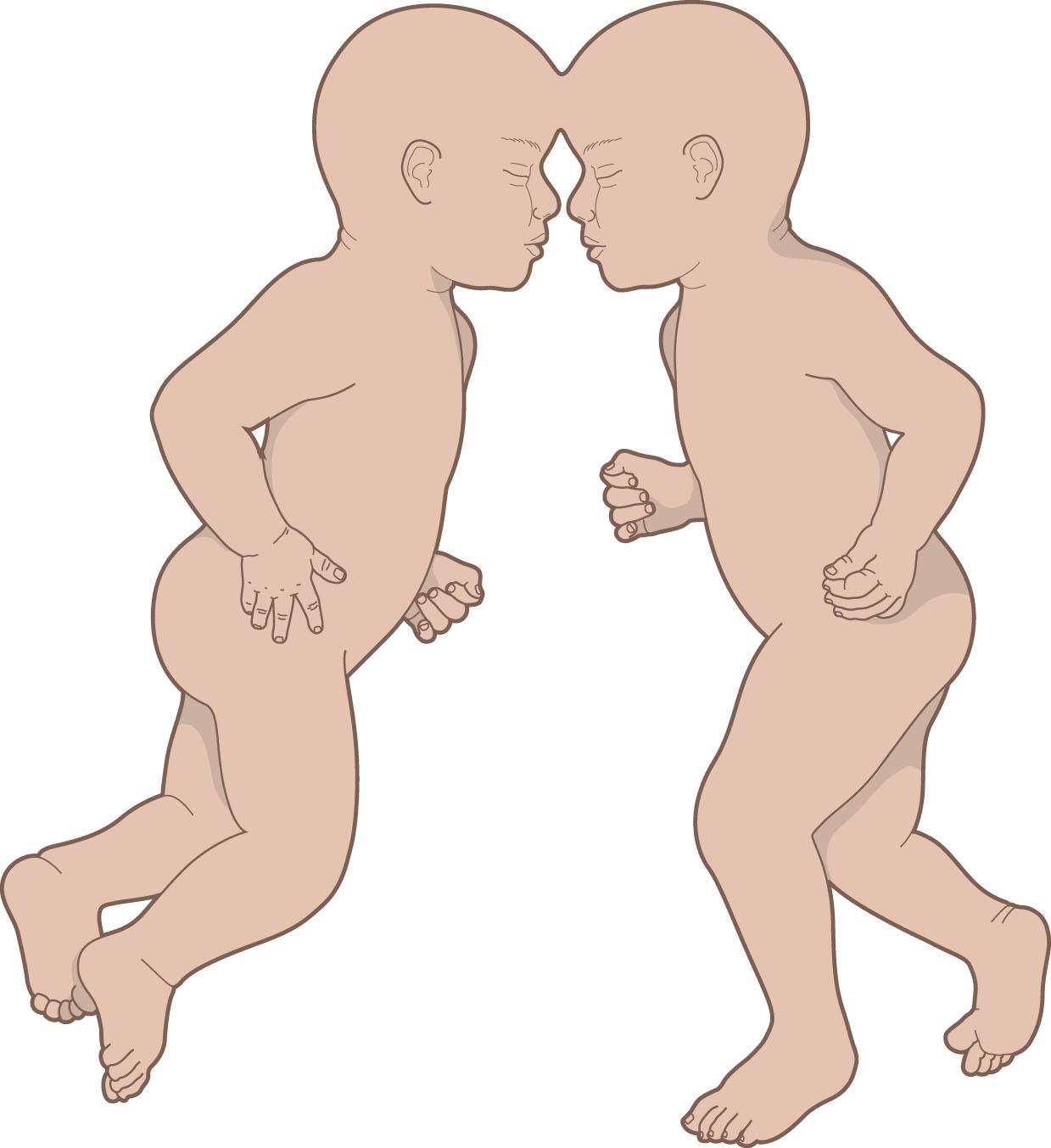
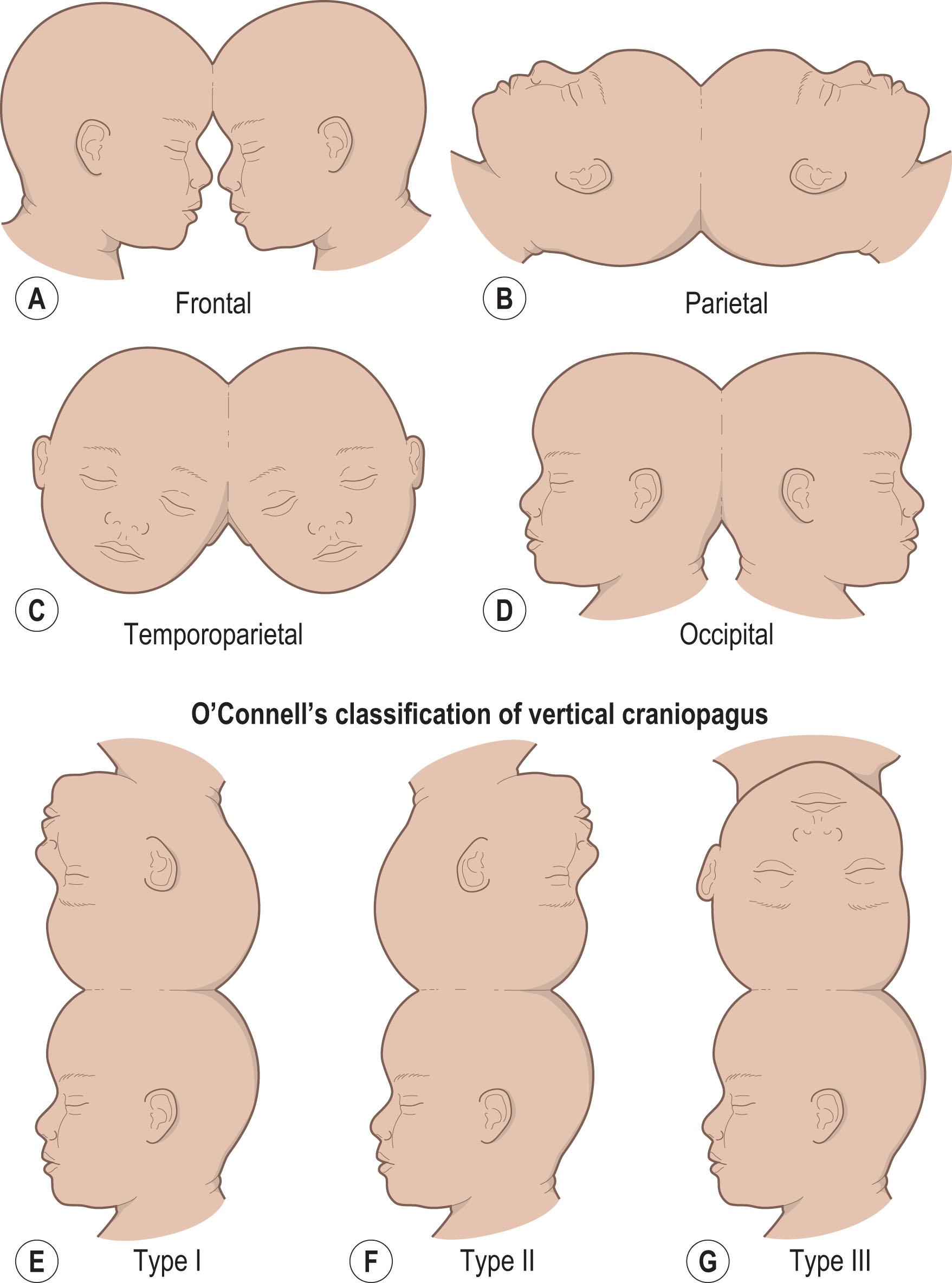
Rachipagus: Rachipagus twins face away from each other and are conjoined dorsally at the vertebral column and spinal cord ( Fig. 34.9 ).
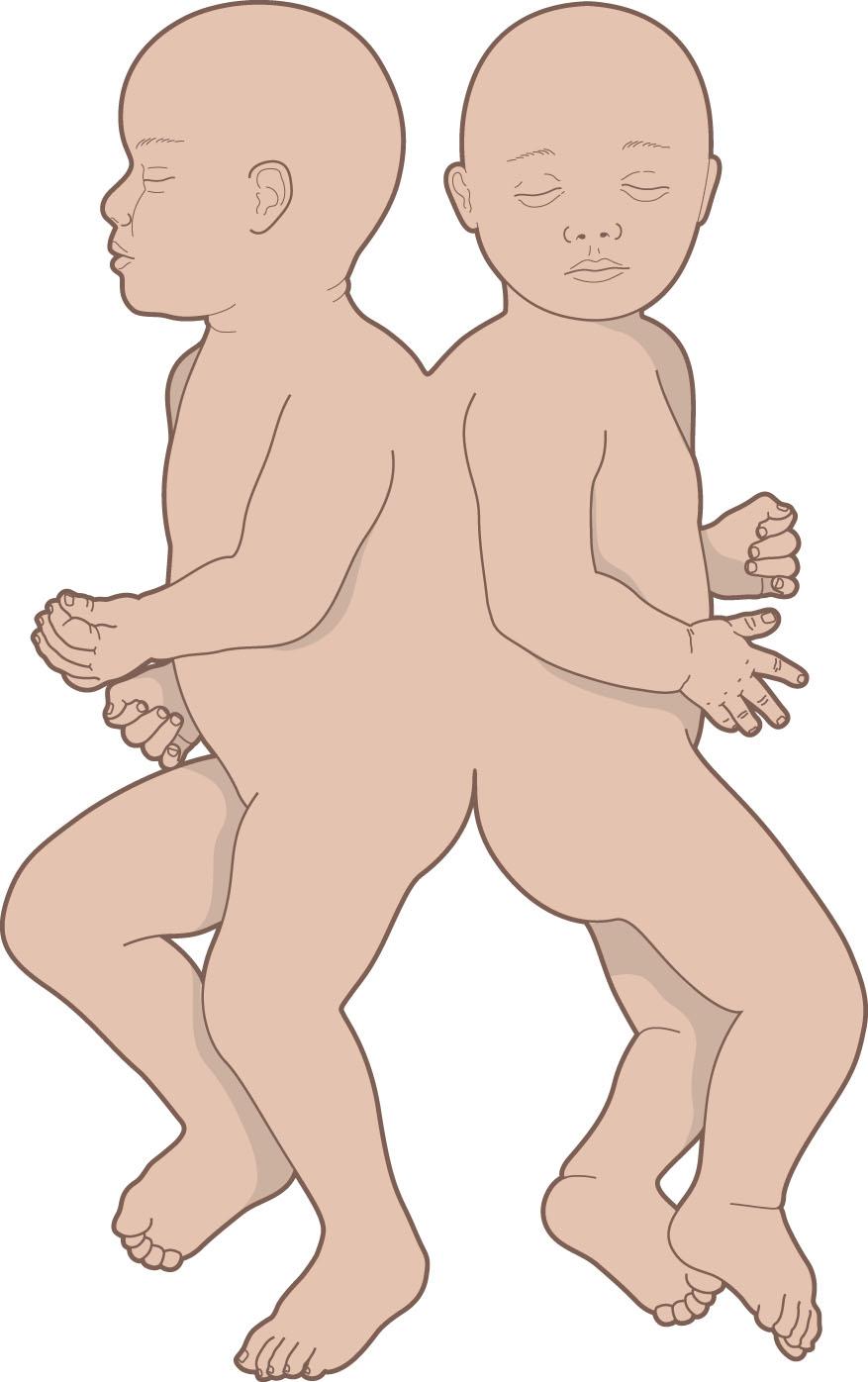
Pyopagus: Pyopagus twins are positioned facing away from each other and are conjoined at the sacrum dorsally ( Fig. 34.10 ). They possess variably shared spinal cords and anorectal, genitourinary, and perineal structures.

| Ventral (87%) |
| Rostral |
|
| Caudal |
|
| Lateral |
|
| Dorsal (13%) |
|
| Spitz et al . | Bentz et al . | Low et al . | |
|---|---|---|---|
| Thoracopagus | 19% | − | 74% |
| Omphalopagus | 18% | − | − |
| Cephalopagus | 11% | Rare | − |
| Ischiopagus | 11% | − | − |
| Parapagus | 28% | 11% | − |
| Craniopagus | 5% | 2%–6% | 2%–6% |
| Rachipagus | 2% | Rare | − |
| Pyopagus | 6% | 18% | 17% |
Become a Clinical Tree membership for Full access and enjoy Unlimited articles
If you are a member. Log in here